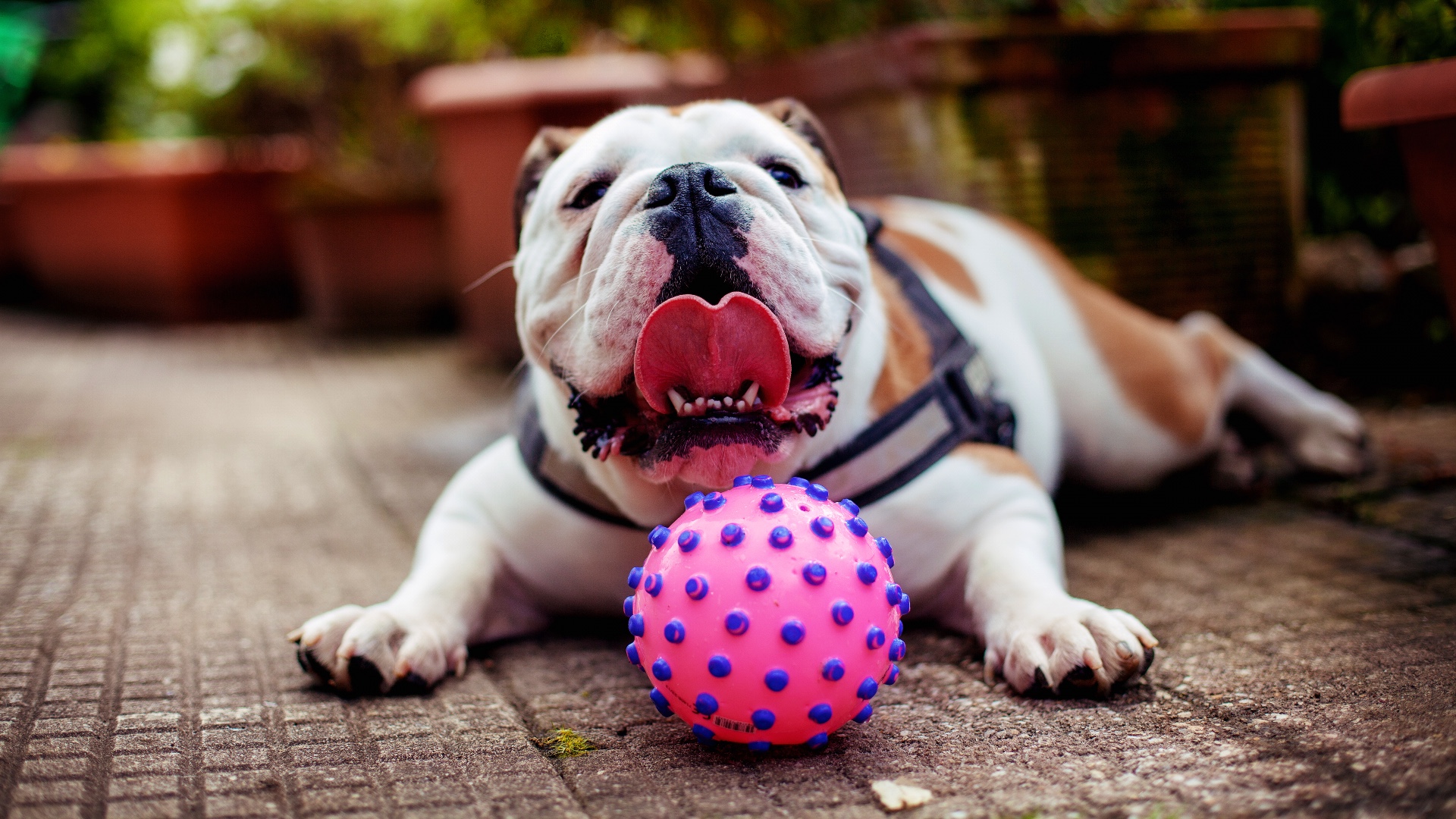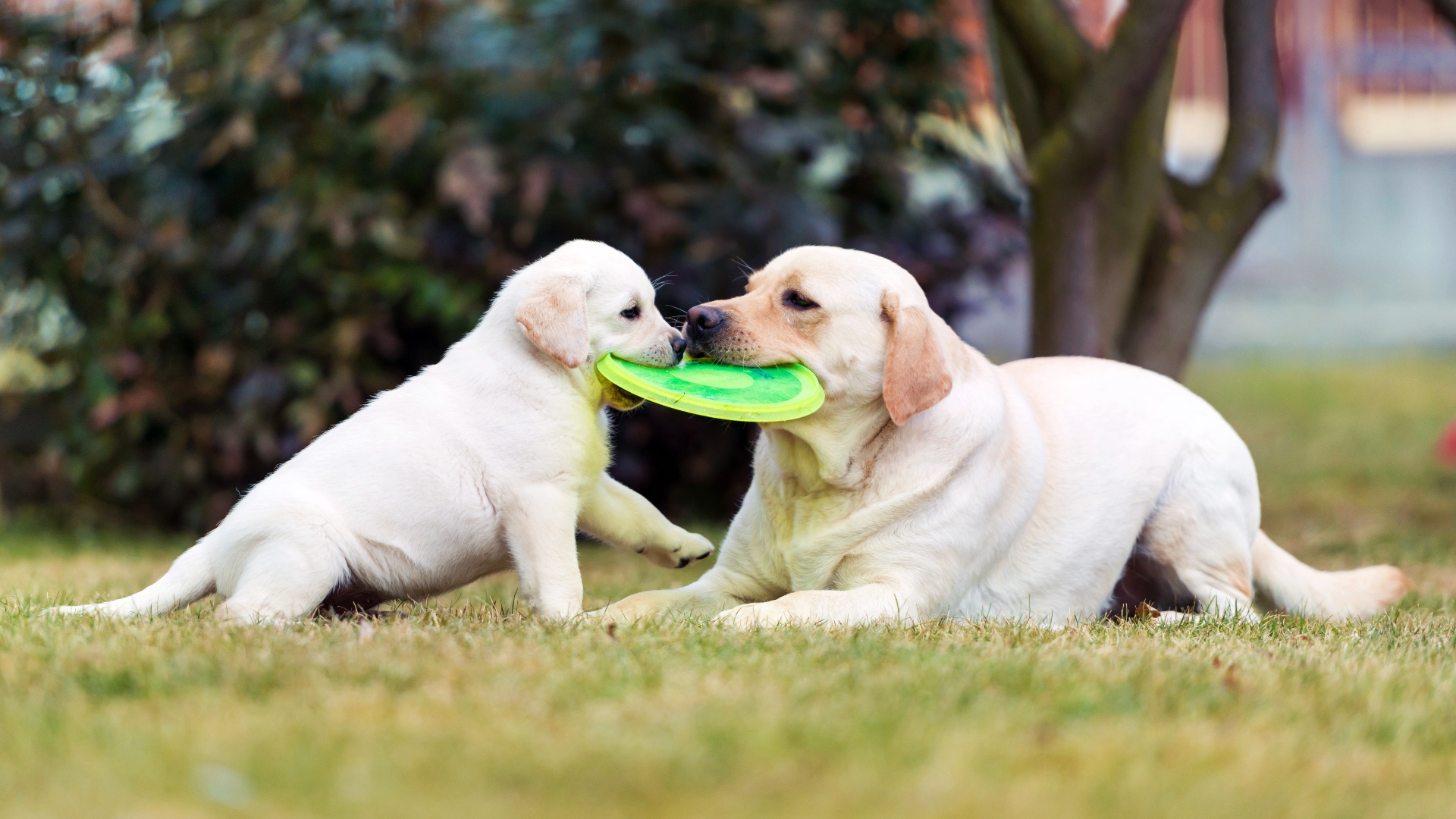How to stop a dog stealing toys
An expert vet explains why dogs steal toys, and what to do if your pooch starts pilfering.

Have you noticed that your dog is stealing toys? Whether it’s from other dogs, cats, or even children, canine thievery is just as undesirable as it is in humans, so it’s important to train them out of that behavior as soon as possible.
There are many reasons that you should want to stop your pooch from pilfering things that don’t belong to them. It can be embarrassing when your dog is socializing with others, but it can also be dangerous too — another dog might not take too kindly to having their best dog toys stolen.
Dogs roll on their toys to mark them with their scent, staking their claim in the process, and they’re not going to be thrilled if your furry friend decides to steal their beloved toy. We’ve covered how attached dogs can get to their toys in our guide to resource guarding in dogs — check it out for more information.
Beyond avoiding fights with other pooches, dogs that steal toys will often extend that behavior to other items, like your shoes, slippers, and just about anything they can fit their jaws around. Training them out of stealing will also help to keep your precious footwear safe.
So let’s dive into why dogs steal toys, and then look at some tips on helping to train your dog out of this life of crime.

After graduating as a veterinarian from the University of Nottingham, Dr Joanna Woodnutt went on to practice companion animal medicine in the Midlands, UK. Dr Woodnutt is specifically interested in consulting and helping her clients understand their pets better, whether it’s around medical problems such as dermatology, behavior, and nutrition.
Why do dogs steal toys?
There are several reasons dogs steal toys. Dogs that steal toys when out in the park or at the beach often do so in an attempt to join in a game. They can see the other dog having fun, and they want to join in.
If your dog is stealing toys from children or stealing other household items, it’s possible they’re looking for attention. Unfortunately, even negative attention (such as chasing and yelling) is attention as far as a dog is concerned. A good game of chase, followed by a game of tug while you try to retrieve the toy, is just what they’re after. Which means that the more you try to stop this behavior, the worse you might be making it.
Get the best advice, tips and top tech for your beloved Pets
How to stop a dog stealing toys
Let’s look at the ways you can train your dog to stop stealing toys. Which of these methods is best for you and your dog will probably depend on what they’re stealing, and when. Trying several is likely to get you the best results.
1. Don’t chase them!
Firstly, don’t make retrieving the toy a game. Showing interest by chasing them, talking to them, or even making eye contact can all feel rewarding to a dog, so it’s important you don’t inadvertently reward them. Instead, ignore them. Some dogs will drop the item as soon as they realize that you’re going to be boring. If this doesn’t seem to be working, or your dog is in danger, try calling them to you and offering them one of the best dog treats – they’ll have to drop the toy to take the treat. Once your dog drops the toy, whether of his own accord or because you offered a treat in exchange, try to distract him (or get someone else to call him) so that he doesn’t see you removing the item. You don’t want him to realize you thought it was valuable, as this can encourage him to try again!
2. Teach a ‘drop it’ command

If your dog is stealing toys out and about, or even in the house, a ‘drop it’ command is a fairly easy and quick one to learn. It’ll help you give the toy back to its owner with as little fuss as possible.
To teach ‘drop it’, let your dog pick up something low-value, like one of his least-favorite toys. You may need to initiate a game to persuade him to pick it up. Then, offer him a high-value treat and say ‘drop it’, using a clicker or ‘good boy’ just as he drops the toy to take the treat.
Repeat this often, steadily moving up to his favorite toys, and changing his reward so that sometimes it’s a lower-value reward. Once he’s got the hang of it in the house, you can rehearse this outside, or even in a quiet park, to help solidify the learning before he’s got to use it in real life.
3. Give them plenty of attention and mental stimulation
We’ve just said that dogs may steal to get our attention. So, try making sure they’re tired and happy, instead of bored and looking for trouble. Plenty of attention in the form of walks, playing games, and training can help to reduce toy stealing. In addition, tiring them out using mental stimulation and environmental enrichment can help, too - dog puzzle toys are an excellent, easy way to let them use their brains.
4. Teach a ‘leave it’ command
If your dog is prone to picking up anything they find on the floor, a ‘leave it’ command can be useful from a safety perspective. To teach ‘leave it’, you need to show your dog that they’re rewarded for ignoring the item. Put your dog on a lead and a low-value toy out of reach. Say ‘leave it’, rewarding your dog when he turns to look at you instead of the toy (If he doesn’t look at you within a couple of seconds, you may need to make a noise to encourage him to turn).
Mark the good behavior with a click or ‘good boy’, and give him a treat. Once ‘leave it’ reliably gets your dog to look at you and await his treat, try swapping the toy for something high value, or even something edible.
Do dogs grow out of stealing toys?

If your pet was in charge for a day stealing toys might be at the top of their list. Many dogs will steal toys when they’re young. A combination of being mentally active, pushing and testing boundaries, and a lack of experience of good and bad behavior means that young dogs are more prone to toy stealing.
The good news is that this means many (but not all) dogs will grow out of stealing toys, so if your dog is still a puppy you shouldn’t panic. However, to make sure that they do (rather than let it become an ingrained habit), you should practice some of the training techniques discussed above.
Simply waiting for your dog to grow out of this phase can not only be dangerous in the meantime, but it’s also risking them learning the behavior and repeating it well into adulthood.
It’s quite common for dogs, especially puppies, to try stealing toys. At first, it’s often curiosity that encourages them, but they quickly learn that it’s a fun way to get your attention. It’s best to ignore your dog when they steal toys and train some useful commands to help recover stolen items quickly and safely.
If you have multiple puppies or dogs in the house and want to help cut down on the toy stealing, make sure you have enough playthings to go around. We wrote an article covering how many toys a puppy should have, which explains the ins and outs of managing your dog's toybox.
If your pooch is prone to resource guarding and the usual tips aren’t helping, then check out our article on alternative ways to stop resource guarding in dogs, where a dog behaviorist explains how to approach this issue in stubborn canines.
After graduating as a vet from the University of Nottingham in 2016, Dr. Joanna Woodnutt went on to practice companion animal medicine in the Midlands. She quickly developed a love of consulting and helping clients with medical problems such as dermatology, behavior and nutrition - anything that involved helping clients understand their pets better.
Jo started writing about pet health in 2017, realizing that it meant she could help even more pet parents. Since then, she has written for countless online and print publications and is a regular contributor for Edition Dog Magazine. Jo is the director of The Veterinary Content Company, which she founded in 2020. She is also the founder of Petlearnia, a platform that provides pet e-learning courses for pet parents.
Jo now lives in the Channel Islands with her husband Ian and terrier Pixie.
